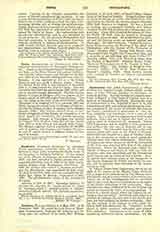

Copacavana (also called COPACABANA), a village of about four hundred people, Indians chiefly, on the shore of Lake Titicaca, province of Omasuyos, in northern Bolivia. It is the location of a famous sanctuary dedicated to Our Lady of Carmel, and of a convent of Franciscan Recollects. During the wars of independence it was despoiled of most of its rich ornaments and gifts, and ruthless plundering by faith-less custodians in the course of political disturbances has further contributed to impoverish it. The edifices, originally very handsome, are in a state of sad neglect. It is a shrine for pilgrims from Bolivia and southern Peru, and on August 6 the feast of its patron saint is frequented by thousands. Before 1534 Copacavana was an outpost of Inca occupation and perhaps the only one on Bolivian soil of any prominence. The Incas held it as the key to the very ancient shrine and oracle on the Island of Titicaca, which they had adopted as a place of worship, yielding to the veneration in which it stood among the Aymara, from time almost immemorial. There were at Copacavana minor shrines, in which the ceremonial of the Incas was observed with that of the original inhabitants. When the Spaniards first visited the Islands of Titicaca and Koati, in 1534 and 1538, the primitive cults were abandoned and the Dominicans made Copacavana the center of their missions. Secular priests then replaced them at the instigation of the Viceroy Francisco de Toledo, and finally the mission and its annexes were entrusted to the Augustinians in 1589.
In 1582 an Indian from Copacavana, struck by the sight of the statues of the Blessed Virgin which he saw in some of the churches at La Paz, tried to make one himself, and after many failures, succeeded in producing one of fair workmanship for an untrained native, and it was placed at Copacavana as the statue of the tutelar protectress of the community. Many miracles have been attributed to it, and its fame has spread far beyond the limits of its surroundings. It is kept in a special chapel, where the Indians are untiring in their devotions. The jewels with which it is adorned are perhaps the only ones in the church that have not been replaced by modern imitations. During the uprising of the Indians in 1781, while the church itself was desecrated, the “Camarin”. as the chapel is called, remained untouched and exempt from spoliation. Copacavana is the scene of often repulsively boisterous Indian celebrations. On the 2d of February and 6th of August, Church festivals furnish the pretext for Indian dances that the clergy have not yet been able entirely to reform. The mixture of the old Pagan with the Christian is interesting, although a source of mortification to the Bolivian clergy, who are as yet unable to modify it. Copacavana is surrounded by pre-Columbian ruins of considerable interest.
AD. F. BANDELIER

